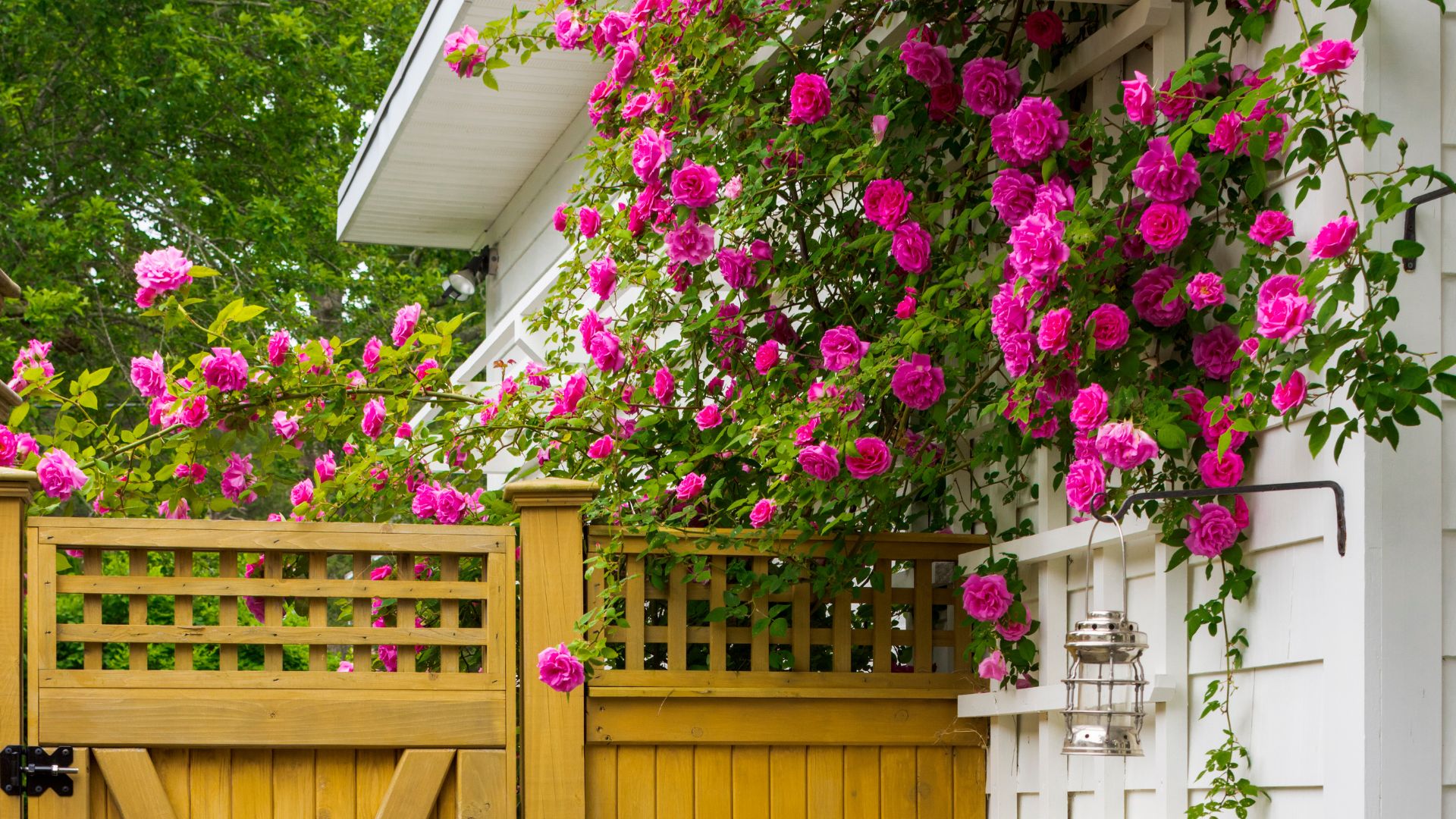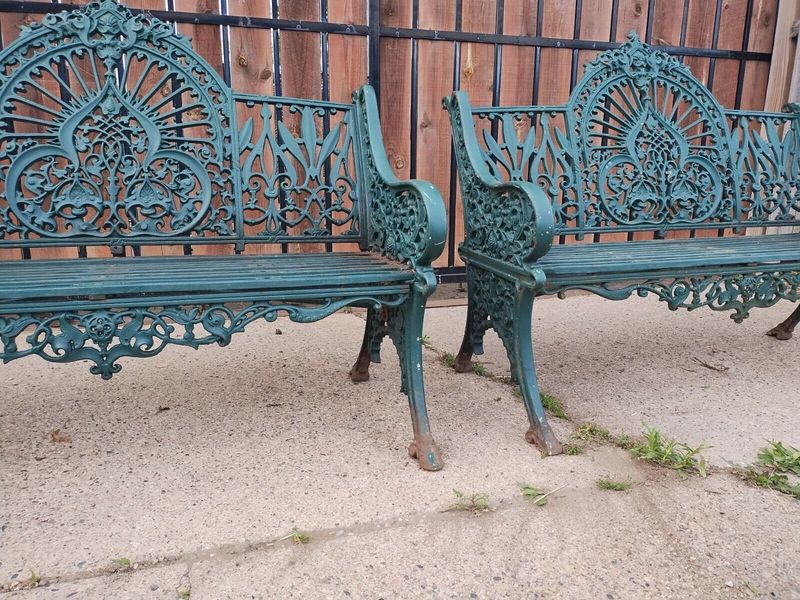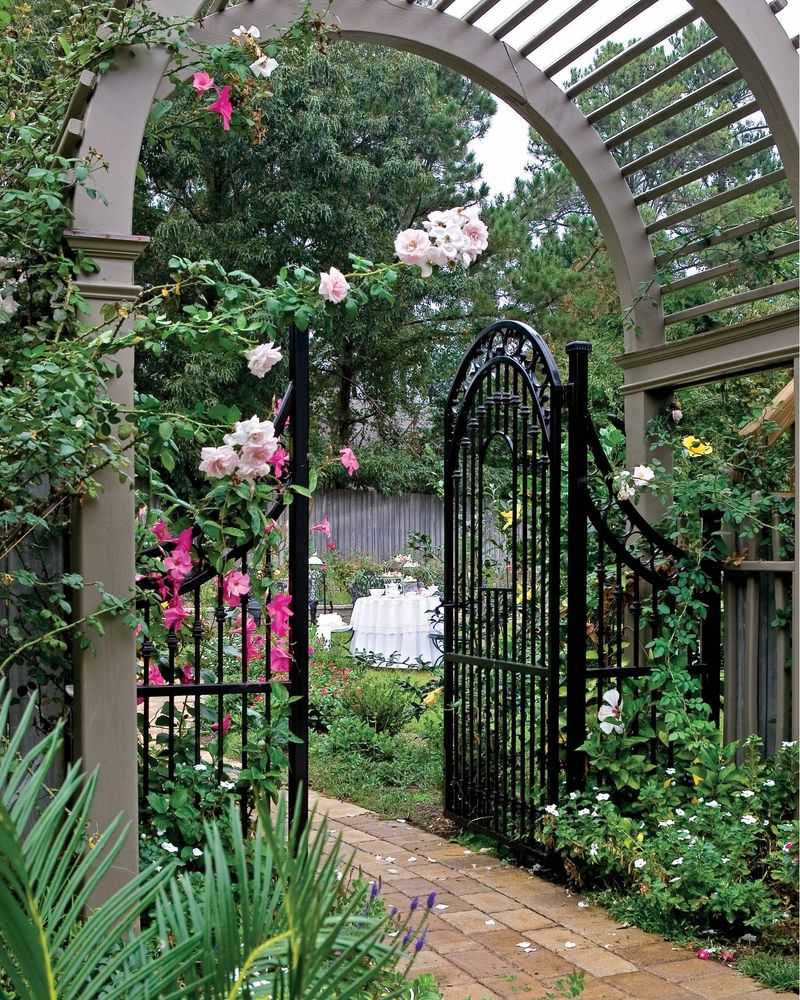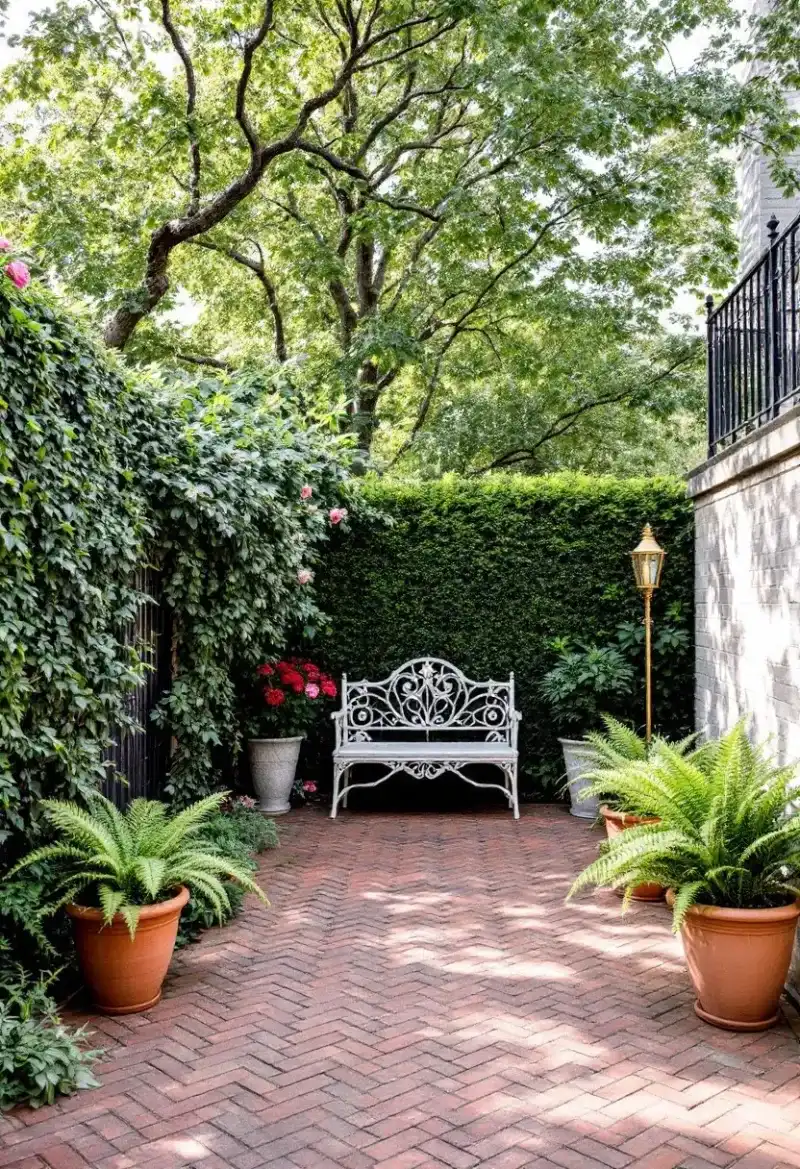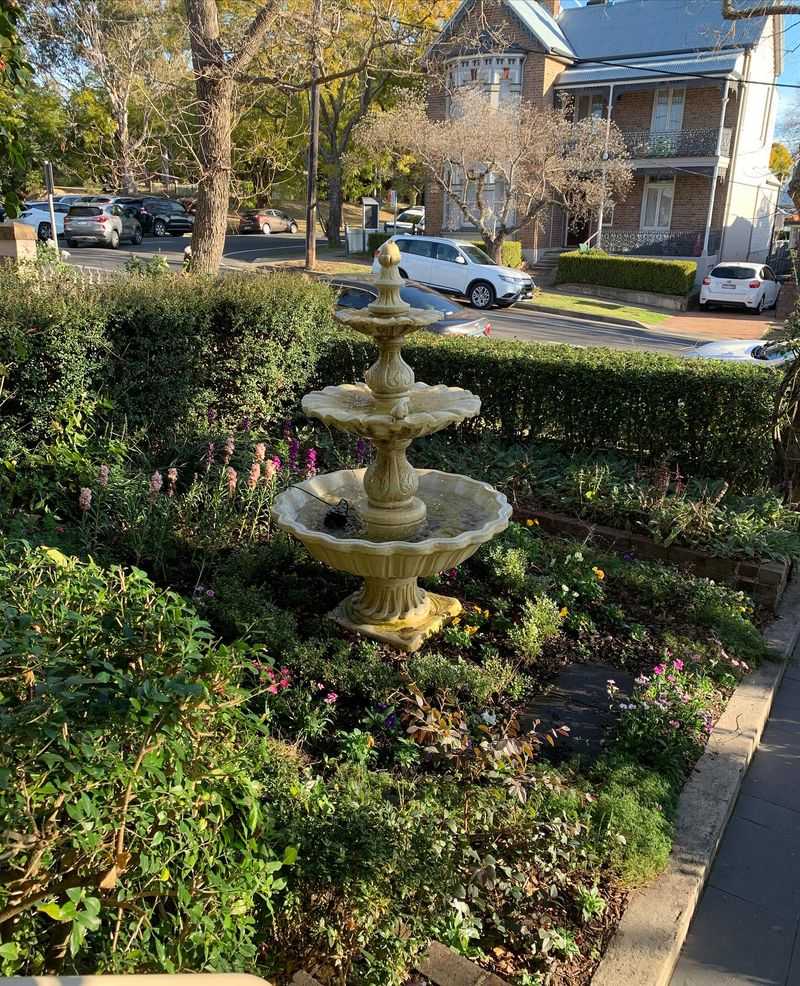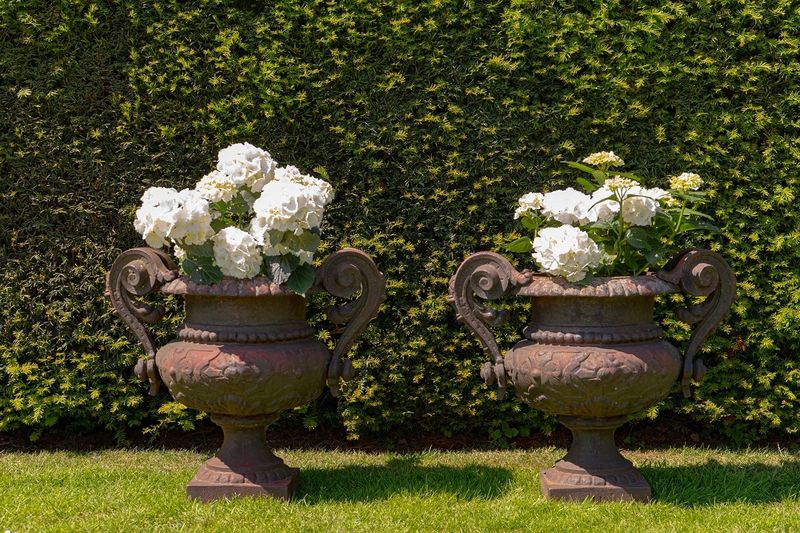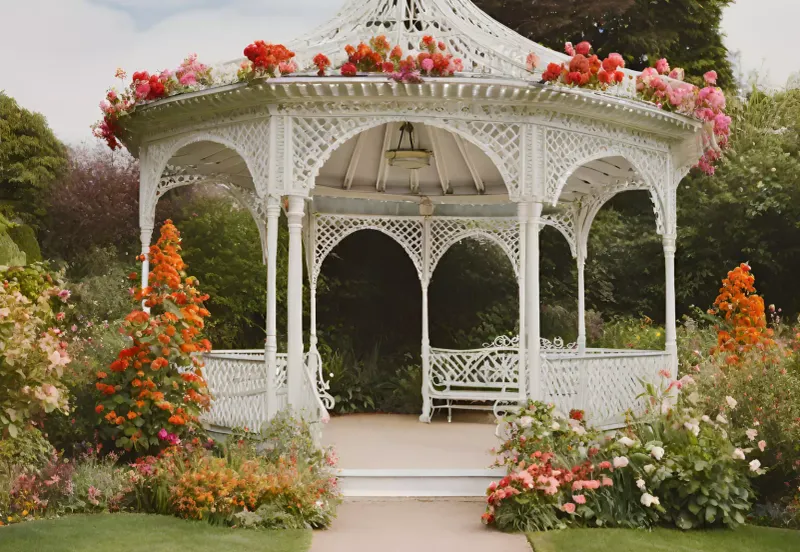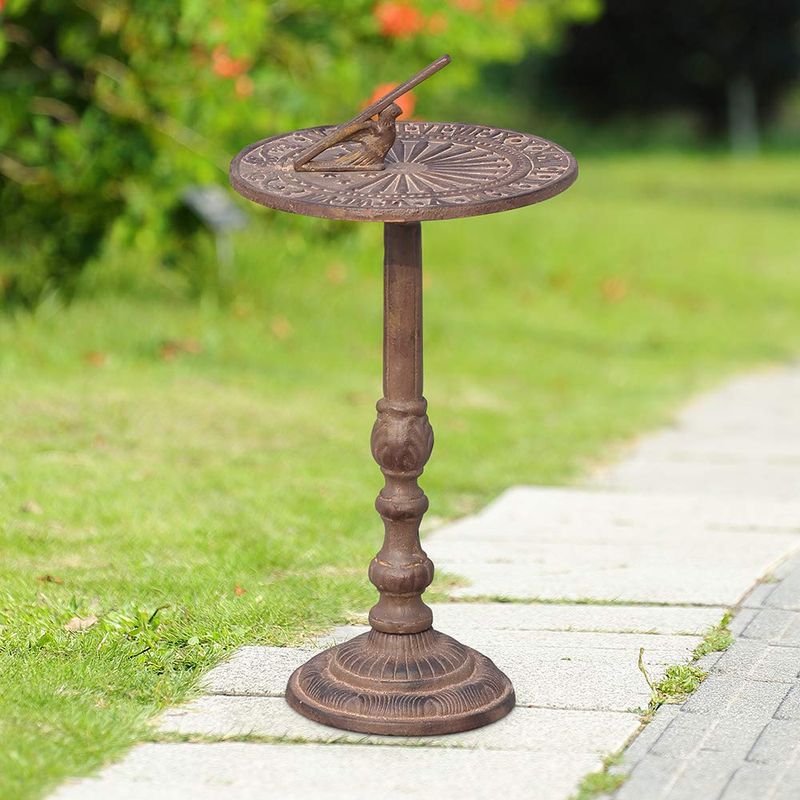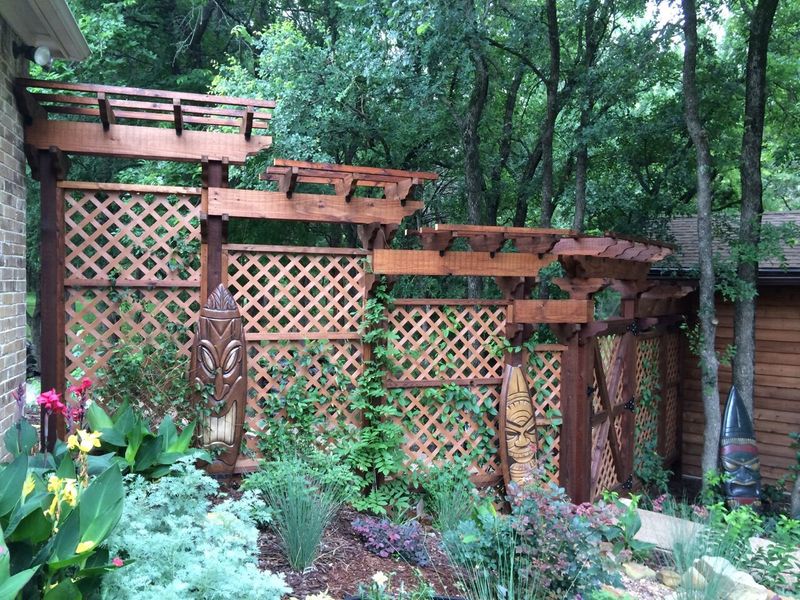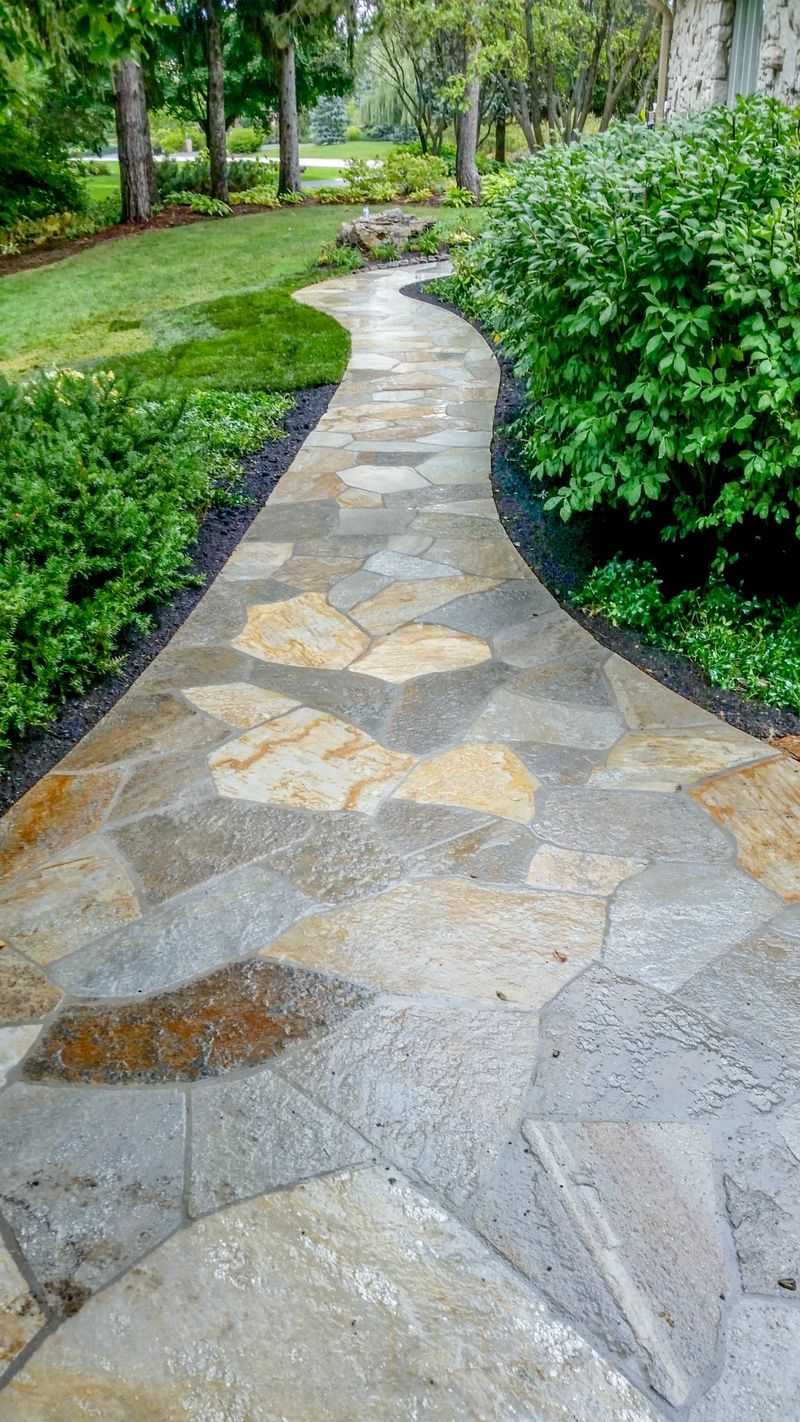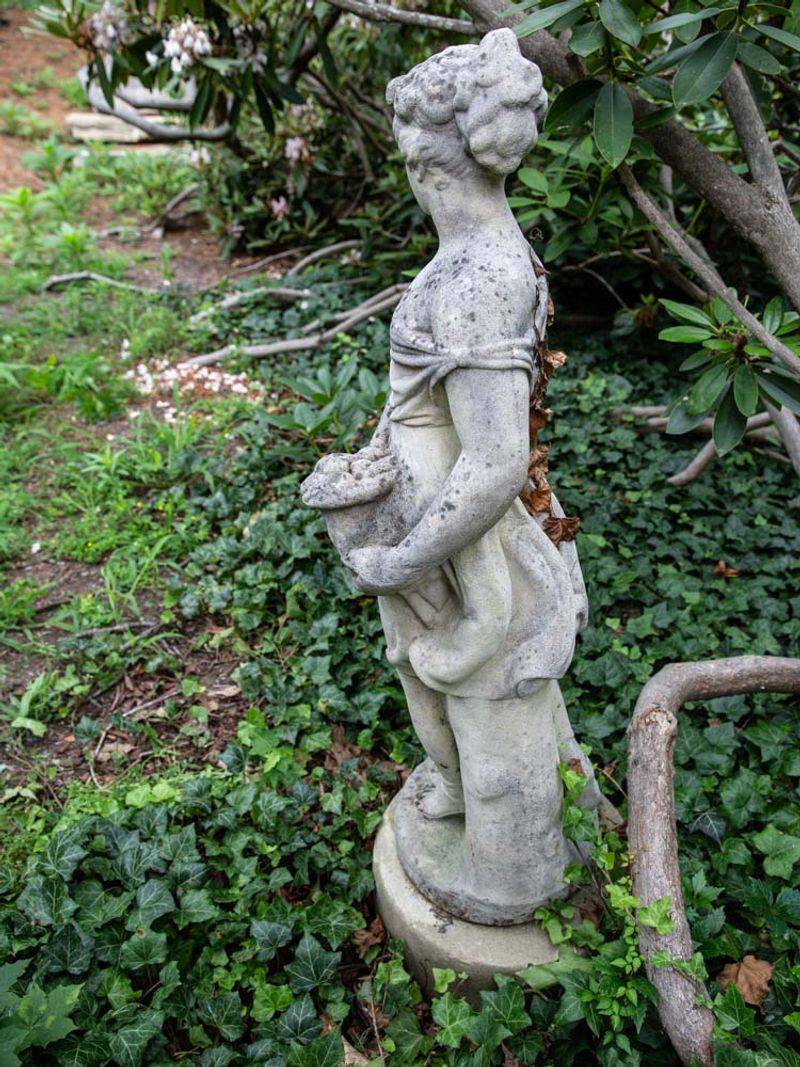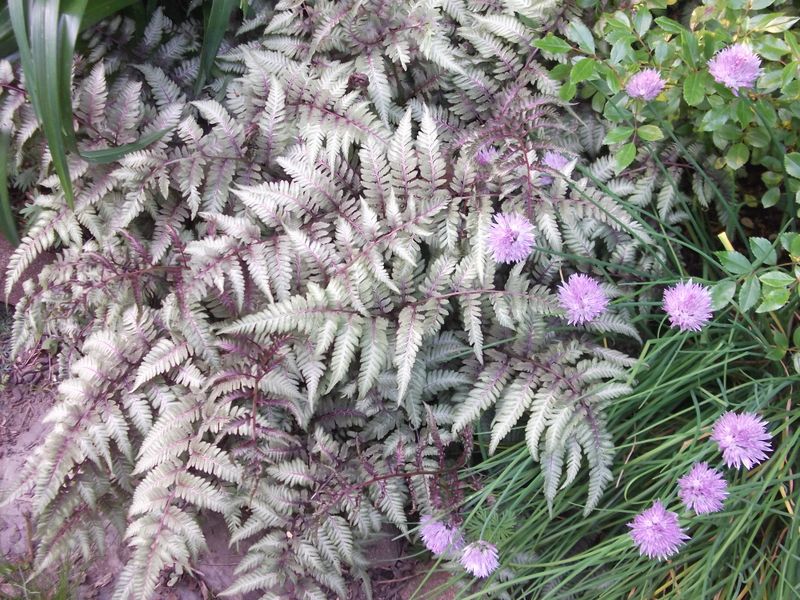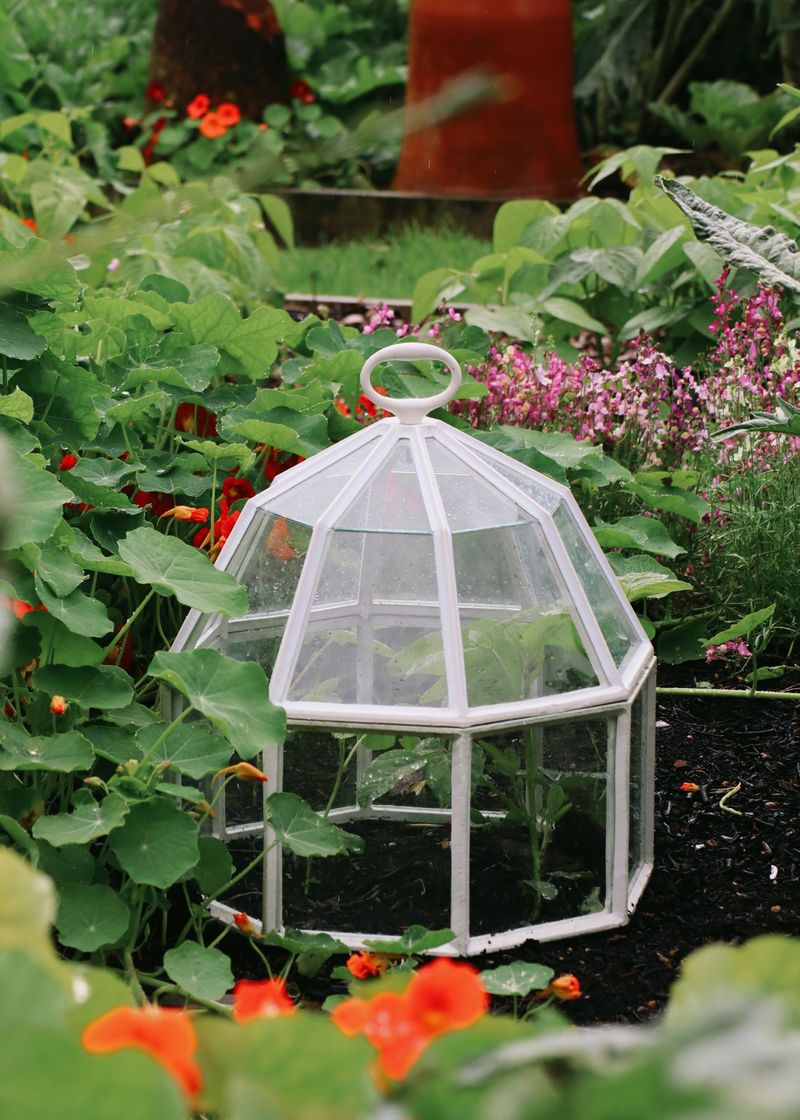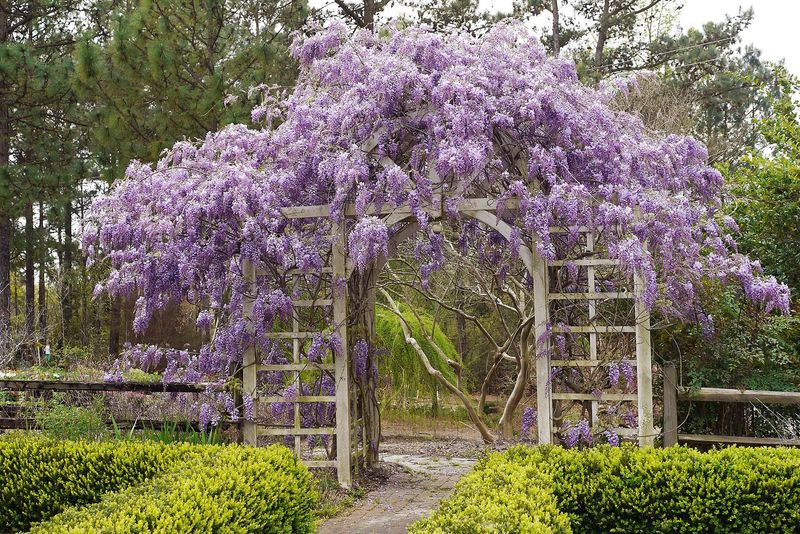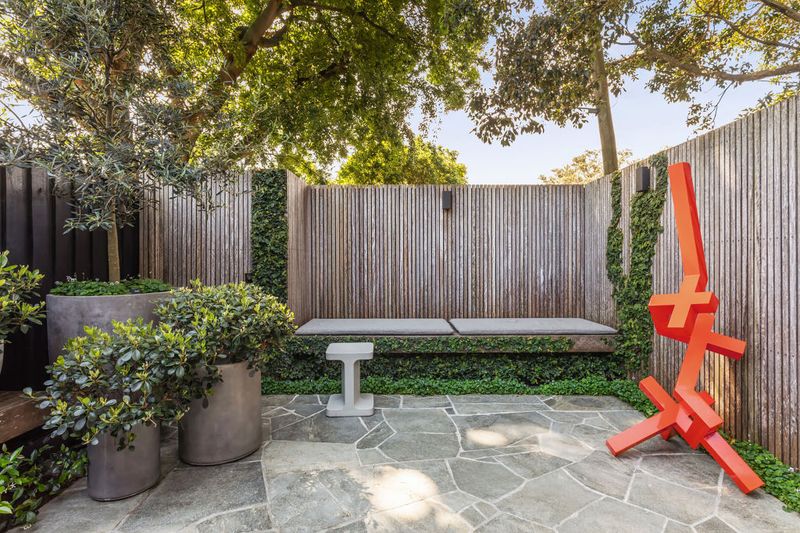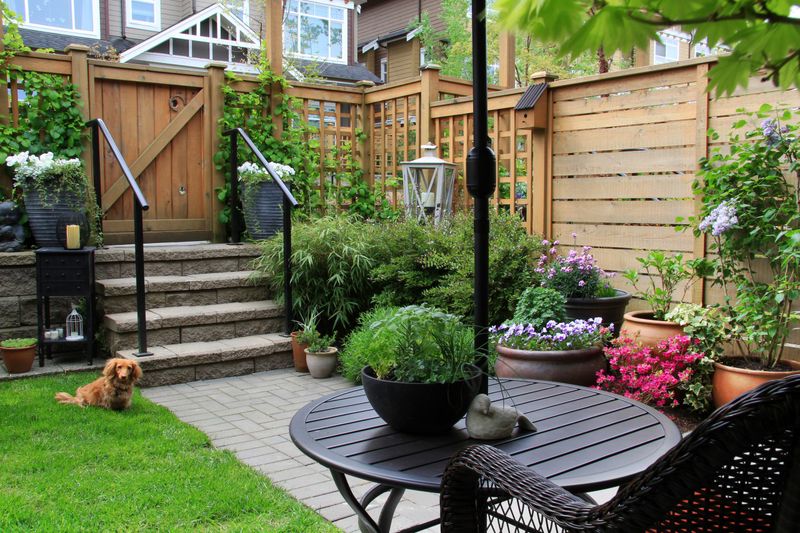You don’t need a grand estate or formal grounds to bring a touch of Victorian charm to your garden. I used to think recreating that elegant, romantic look was out of reach—until I realized it’s really about the details.
With the right plants, a few vintage-inspired accents, and a little intention, even a small backyard can feel like a step back in time. The key is knowing which elements truly capture that Victorian spirit without going overboard.
Here are some timeless touches that can help you create a garden that feels both graceful and genuinely nostalgic.
1. Wrought Iron Benches
Sitting areas were essential in Victorian landscapes, offering spots for quiet contemplation amid nature’s beauty. A black or dark green wrought iron bench creates an instant period connection without overwhelming the space.
Position these classic seating options near flowerbeds or along garden paths where visitors can pause to enjoy the surroundings. The intricate scrollwork and sturdy construction make them both decorative and functional additions that weather beautifully over time.
Even tiny gardens benefit from a small wrought iron bench tucked into a corner. Look for authentic reproductions with traditional patterns rather than modern interpretations for the most convincing Victorian appearance.
2. Climbing Roses
No plant captures Victorian garden sensibilities quite like climbing roses. These versatile plants create vertical interest while connecting to the era’s love of romantic, scented blooms that soften architectural elements.
Train them over arches, along fences, or up trellises for maximum impact. Heritage varieties like ‘Zéphirine Drouhin’ (a thornless bourbon rose) or ‘Climbing Souvenir de la Malmaison’ offer authentic period appeal with their full, cabbage-like blooms and strong fragrance.
Small gardens can use climbing roses to create height without sacrificing ground space. For easier maintenance, choose disease-resistant varieties that don’t require the constant spraying that many antique roses need.
3. Ornate Bird Baths
Bird watching was a popular Victorian pastime, making decorative bird baths both practical and aesthetically pleasing garden additions. Stone or cast iron versions with pedestal bases create focal points while attracting wildlife.
Place these decorative elements where they can be seen from windows or seating areas. The best Victorian-inspired designs feature naturalistic details like leaves, vines, or classical figures rather than minimalist modern shapes.
For smaller gardens, choose a scaled-down version that serves as a sculptural element without overwhelming the space. Add small stones in the basin to give visiting birds secure footing while they drink and bathe.
4. Boxwood Hedges
Structure and order were hallmarks of Victorian garden design, with neatly trimmed boxwood creating defined spaces and geometric patterns. These evergreen shrubs provide year-round structure while framing more casual plantings.
Use boxwood to create low borders around flower beds, line pathways, or form knot gardens with intersecting patterns. The clean lines and deep green foliage create a formal backbone that balances the exuberance of flowering perennials.
Container gardens can incorporate dwarf boxwood varieties for the same effect in miniature. Regular trimming is essential for maintaining the crisp, manicured appearance that defines Victorian garden structure.
5. Tiered Fountains
Water features were prized in Victorian landscapes, with ornate tiered fountains serving as sophisticated centerpieces. The gentle sound of flowing water creates a peaceful atmosphere while demonstrating the period’s appreciation for craftsmanship.
Install a multi-tiered stone or cast iron fountain as a focal point in a circular bed or at the intersection of paths. The most authentic designs incorporate classical elements like cherubs, fish, or mythological figures with water cascading from one basin to the next.
Modestly sized gardens can incorporate tabletop versions or wall fountains that create the same sensory experience without requiring as much space. Solar-powered options eliminate the need for complex plumbing while maintaining the period aesthetic.
6. Cast Iron Urns
Decorative containers were essential elements in Victorian garden design, with cast iron urns bringing dramatic contrast to the softness of plants. Their substantial presence creates instant architectural interest while referencing classical design motifs.
Position these heavyweight containers at entrances, on steps, or as focal points along garden paths. Fill them with trailing plants like ferns, ivy, and petunias for the overstuffed abundance that characterized Victorian container plantings.
Urban gardens and small spaces benefit from the vertical accent these urns provide without requiring much ground space. Look for urns with lion heads, egg-and-dart patterns, or acanthus leaf details for authentic period styling.
7. Gazebos And Pavilions
Garden structures provided shelter from sun and rain while creating destinations within the landscape. A white wooden gazebo with ornate trim instantly establishes Victorian character while offering a place to sit and enjoy the garden.
Locate these decorative buildings at the end of paths or in corners where they create visual anchors. Traditional octagonal shapes with decorative brackets, spindles, and lattice details are most appropriate for capturing authentic period style.
Smaller properties can incorporate scaled-down versions or even corner arbors that suggest the same aesthetic without requiring as much space. Paint these structures white or a historical color like sage green for period accuracy.
8. Sundials
Time-keeping devices served both practical and decorative purposes in Victorian gardens, with sundials offering philosophical reminders about the passage of time. These classic ornaments bring instant historical connection to any garden setting.
Place a metal or stone sundial atop a pedestal in a sunny, central location where it can actually function as intended. Traditional designs with Roman numerals and thoughtful inscriptions like “I count only the sunny hours” create authentic period atmosphere.
Compact gardens can incorporate wall-mounted sundials that take up minimal space while still providing the same historical reference. For maximum accuracy, position the gnomon (the projecting piece that casts the shadow) pointing true north.
9. Ornate Trellises
Vertical gardening was practiced long before it became a modern trend, with Victorians using decorative supports to showcase climbing plants. An ornate wooden or metal trellis creates instant architectural interest while providing support for flowering vines.
Install these decorative frameworks against walls, at the backs of borders, or as freestanding garden dividers. Fan-shaped, arched, or obelisk designs with decorative finials and crosspieces offer the most convincing period look.
Even balcony gardens can incorporate small trellises to create vertical interest in limited spaces. Paint wooden versions white or black for the most authentic Victorian appearance.
10. Stone Pathways
Garden circulation was carefully planned in Victorian landscapes, with paths guiding visitors through the space while protecting plants from foot traffic. Natural stone walkways create a sense of permanence and craftsmanship that instantly ages a garden.
Construct paths using irregular flagstones with moss or low-growing thyme between the joints for a settled, established look. Creating gentle curves rather than straight lines adds the romantic, naturalistic quality favored in many Victorian garden designs.
Small gardens benefit from narrow stone paths that maximize planting space while still providing access to all areas. Edge pathways with low plants like sweet alyssum or compact lavender to soften the transition between hard and soft elements.
11. Classical Statuary
Art and nature were deeply intertwined in Victorian garden philosophy, with classical statues bringing cultural references and focal points to the landscape. Well-placed stone figures create year-round interest while adding a sense of history.
Select statues depicting classical figures, cherubs, or animals and position them where they can be glimpsed through foliage or at the ends of sight lines. Weather-resistant materials like cast stone develop an aged patina over time that enhances their historical appearance.
Urban gardens can incorporate wall plaques or smaller statues that don’t require as much space while still providing classical references. Place statues on pedestals for greater prominence or partially obscure them with plants for a discovered quality.
12. Fern Collections
Plant collecting reached new heights during the Victorian era, with ferns becoming particularly fashionable during the period’s “pteridomania” or fern craze. These elegant, non-flowering plants bring instant historical context to shady garden areas.
Group different varieties of ferns in woodland settings or shady borders to create textural interest. Victorian gardeners prized unusual specimens, so include distinctive types like maidenhair fern, bird’s nest fern, or Japanese painted fern for an authentic collector’s approach.
Container gardens can showcase potted fern collections on shaded porches or under trees. Display them in terracotta pots or decorative jardinières for period-appropriate presentation.
13. Glass Cloches
Practical gardening tools often doubled as decorative elements in Victorian landscapes, with glass bell cloches protecting tender plants while adding visual interest. These transparent domes create distinctive silhouettes that immediately reference historical gardening practices.
Use traditional bell-shaped cloches to protect young seedlings or display special plants as garden features. The gentle distortion of the thick glass creates beautiful light effects while highlighting the plants beneath them.
Kitchen gardens particularly benefit from these functional ornaments that extend the growing season. Collect different sizes and shapes to create charming groupings that serve both practical and decorative purposes.
14. Wisteria Arbors
Covered walkways transformed garden circulation into immersive experiences, with wisteria-draped arbors creating some of the most romantic Victorian garden scenes. The twisted woody vines and cascading flowers form living architecture that improves with age.
Construct a substantial wooden or metal arbor along a main garden path where the dramatic spring flowers can be fully appreciated. The structure must be robust enough to support the eventual weight of mature wisteria vines, which can become quite heavy over time.
Even small gardens can incorporate a short wisteria-covered entrance arbor that creates a sense of arrival. Be patient—these spectacular vines can take several years to begin flowering, but their long lifespan makes them worth the wait.
15. Heritage Vegetables
Kitchen gardens were practical necessities that Victorian designers elevated through careful planning and decorative elements. Growing heirloom varieties that existed during the 19th century creates authentic connections to garden history.
Incorporate vegetables like ‘Bull’s Blood’ beets, ‘Early Jersey Wakefield’ cabbage, or ‘Scarlet Runner’ beans that were popular during Victorian times. Plant them in geometric beds with clearly defined edges for the orderly approach favored during this period.
Container gardeners can grow heritage varieties in terracotta pots for the same historical reference on a smaller scale. Add practical but decorative elements like bean tepees or willow supports to enhance the period character.
16. Concrete Modernist Sculptures
Modern art pieces create jarring visual disconnects when placed in period-inspired landscapes. Abstract concrete sculptures with their minimalist forms and smooth surfaces fight against the ornate, naturalistic qualities that define Victorian garden aesthetics.
The stark materials and simplified forms of modernist art represent completely different design philosophies than those that guided Victorian garden makers. These anachronistic elements immediately signal that the garden is not an authentic period creation.
If you’re drawn to sculptural elements, choose pieces with classical references, natural motifs, or romantic themes that align with Victorian sensibilities. Weathered materials and ornate details will integrate more successfully than sleek, contemporary forms.
17. Mass-Produced Plastic Ornaments
Material authenticity matters tremendously in creating convincing period gardens. Inexpensive plastic flamingos, gnomes, and animal figures with their bright colors and uniform appearance instantly undermine Victorian garden authenticity.
These lightweight decorations lack the substantial presence and craftsmanship that characterized Victorian ornaments, which were typically made from durable materials like cast iron, stone, or terracotta. The artificial sheen and perfect uniformity of plastic immediately signals modern mass production.
If budget constraints prevent investing in authentic materials, focus instead on plants and layout rather than decorative elements. A garden with appropriate plant choices and thoughtful design will feel more Victorian than one filled with anachronistic plastic ornaments.

